What is a healthy ramadan? Have you ever thought about improving your health and well-being during Ramadan? Ramadan is a spiritual month in which we focus on establishing our spiritual connection with our creator, Allah SWT, and ignore our physical health and well-being. In fact, we get more rewards in the way if we are more focused on our health during Ramadan. A healthy ramadan meal is a perfect idea to gain all health benefits.
In reality, Allah SWT has created every virtue for the betterment of human beings, and the same applies to fasting. Scientifically, fasting has several health benefits, including improved insulin sensitivity, lower blood pressure, and reduced inflammation. Additionally, fasting improves our immunity. Moreover, if you correlate the concept of intermittent fasting, which is quite famous these days, it is extracted from here.
Focus on physical health during Ramadan:
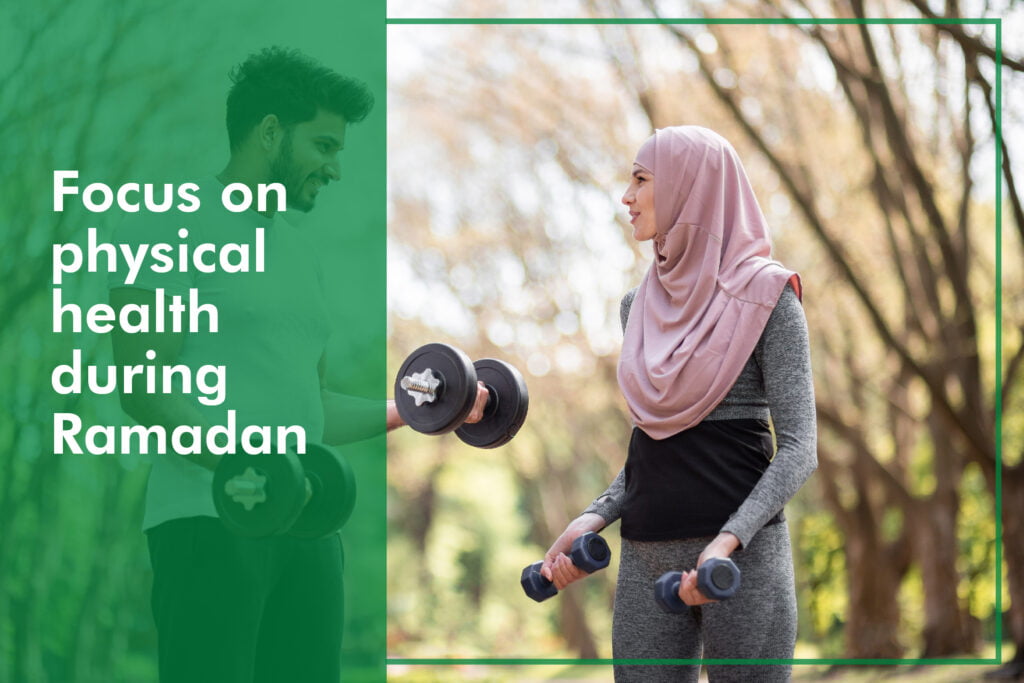
As women, we are empowered to establish healthy nutritional habits in our families and societies. It’s straightforward to boost our health by taking care of our dietary routine this month. Let’s start this journey this Ramadan and set some rules to bring these nutritional changes into our lives.
- Eat a healthy and balanced diet: include complex carbohydrates, protein, and healthy fats.
- Avoid fried and processed foods and limit your intake of sugar and fatty foods.
- Stay hydrated: Drink at least 1.5-2 Liters of water per day
- Avoid overeating: Eat smaller, frequent meals to keep energy levels stable.
- Exercise: 150 Min/week
- Get enough sleep: A regular sleep routine.
- Practice mindfulness: it helps to reduce stress and improve overall well-being.
- Seek medical advice for any health concerns or chronic medical conditions before Ramadan.
Optimize Fasting and Have a Healthy Ramadan
I agree that changes can’t happen overnight, and it is crucial to learn and understand the importance of changes before implementing them. Acquiring new things is a stepwise process. We should start by setting goals, prioritizing our needs, and understanding our limitations.
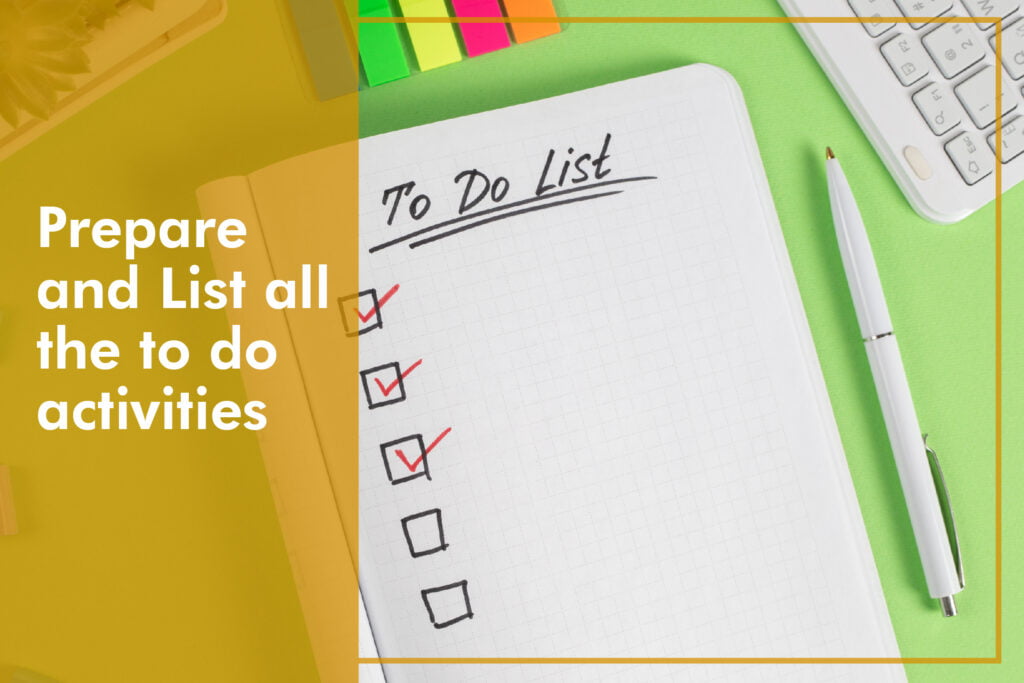
Prepare and List all the to-do activities beforehand.
Similarly, if you want to change this Ramadan, it should be started earlier so you feel safe. Why not start by talking to family members, husbands, kids, siblings, or parents and see what they think if you bring the idea of eating healthy to optimize physical health during the holy month? Then list what you must do, including groceries and a monthly meal plan. It will reduce your overall burden during fasting and help you focus on your deeds and health. Additionally, plan out your daily schedule, time for sleep, Suhoor, work, Iftar, and prayers. This will keep you organized too.
Our primary focus is food or nutrition.
We take care of meals during Iftar and Suhoor. We spend a lot of time in the kitchen in meal preparation. Still, genuinely speaking, we have yet to think about caloric requirements and intake according to our family members’ age groups and health conditions. Fasting can lead to loss of muscle mass, especially in the elderly and kids. That’s why the need for the caloric requirement is vital.
This may be helpful:https://remediesforum.com/2021/05/25/the-banana-the-bundle-of-joy/
Complete Nutrients of a Healthy Ramadan Meal
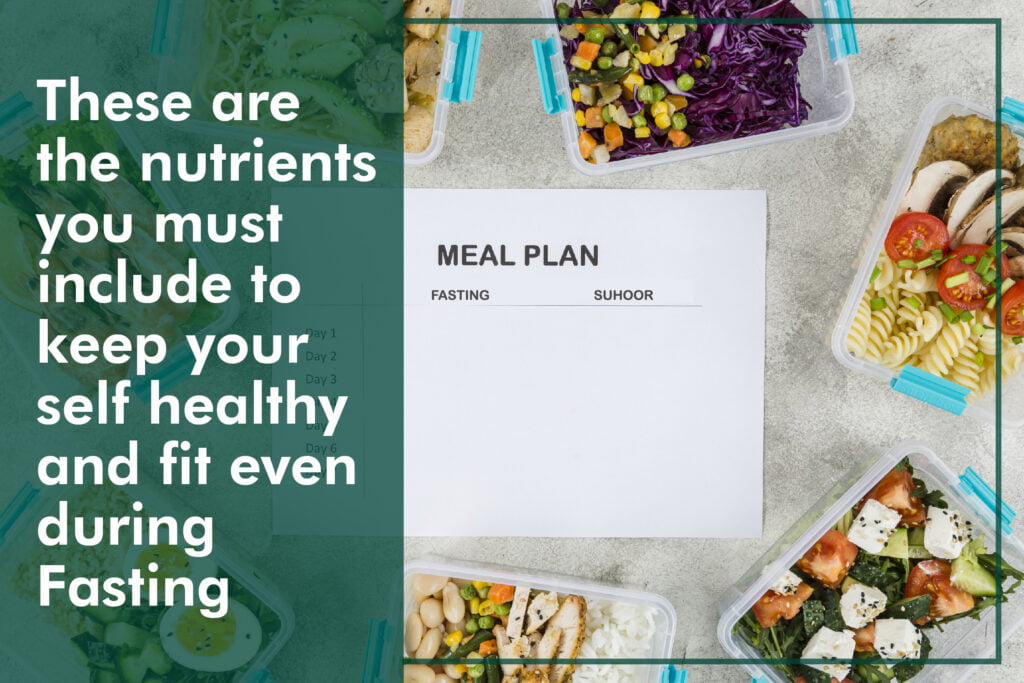
Meals should be EASILY DIGESTIBLE, and PROTEIN PACKED, especially 1.5-2g of protein per kilo of body weight, should be consumed. Counting calories is essential and accessible. The simple formula is 1 gram of protein has 4 calories, 1 gram of carbohydrates has 4 calories, and 1 gram of fat provides 9 calories. Or, in another way, you can also find calories from many food ingredients and meals on the internet. Some of our commonly used food items in Ramadan and their calories are as follows:
- Small 6-inch chapati contains around 71 calories.
- Cooked Rice; 1 CUP; 160 GRAMS, Calories 205
- 100-gram chicken: 200 cal
- 1 cup fruit chat/ 250 grams= 125 cal
- 100-gram red meat: 270 cal
- Fried samosa= 262 calories
- Potato Fritter (1 fritter) = 26g carbs, 9g fat, 3g protein, and 185 calories
Healthy Ramadan: What should I eat to stay healthy?
The caloric requirement of a healthy adult should be 1600-1800 calories /day, and it should be split between Iftar and Suhoor. Caloric intake must be high in pregnant women and growing kids or the elderly. Additionally, dates are part of sunnah and tradition for breakfast, have a natural source of sugar, balance low blood sugar, and fuel the body; they are rich in potassium, copper, and magnesium. A good alternative could be dried fruits such as apricots, figs, raisins, or prunes.
Iftar meals ideas for Healthy Ramadan:
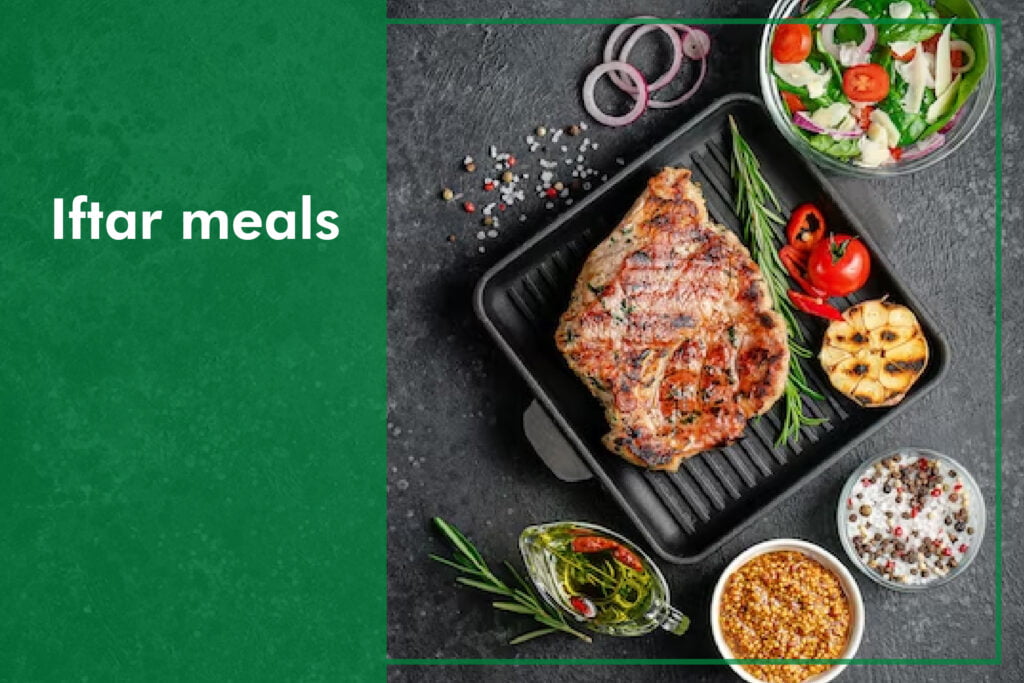
The Iftar – should contain healthy, complex carbohydrates and lean proteins.
Low glycemic and Complex carbs; brown rice, whole grain pasta, whole grain bread, potatoes
The reason for using low glycemic foods as it releases glucose slowly into the bloodstream and provides sustained energy, and avoid weight gain. Examples of low-glycemic foods: are vegetables, fruits, whole grains, nuts, and seeds
Eat greens-— full of vitamins, minerals, and fiber. Colorful salads can be comprised of half a cup of raw or cooked vegetables or 1 cup of leafy raw vegetables.,
A bowl of soup– its nutrient value could be boosted by adding vegetables, tomato, or lentils.
Protein: chicken, fish, beef, lamb, lentils, tofu, eggs, nuts, and seeds
The “healthy” fats, such as monounsaturated, polyunsaturated, and omega-3s, play a huge role in mental health and controlling weight. Its found in nuts, seeds, nut butter, olives, olive oil, salmon, eggs
Fibre is found in fruits, veggies, whole grains, legumes, and nuts/seeds.
An excellent example of a healthy iftar is chicken breast or salmon fillet with brown rice and green vegetables, followed by fruit and yogurt.
Dates, bananas, and peanut butter -a fantastic natural sources of quick energy and fit in extra nutrients
Suhoor ideas for Healthy Ramadan:
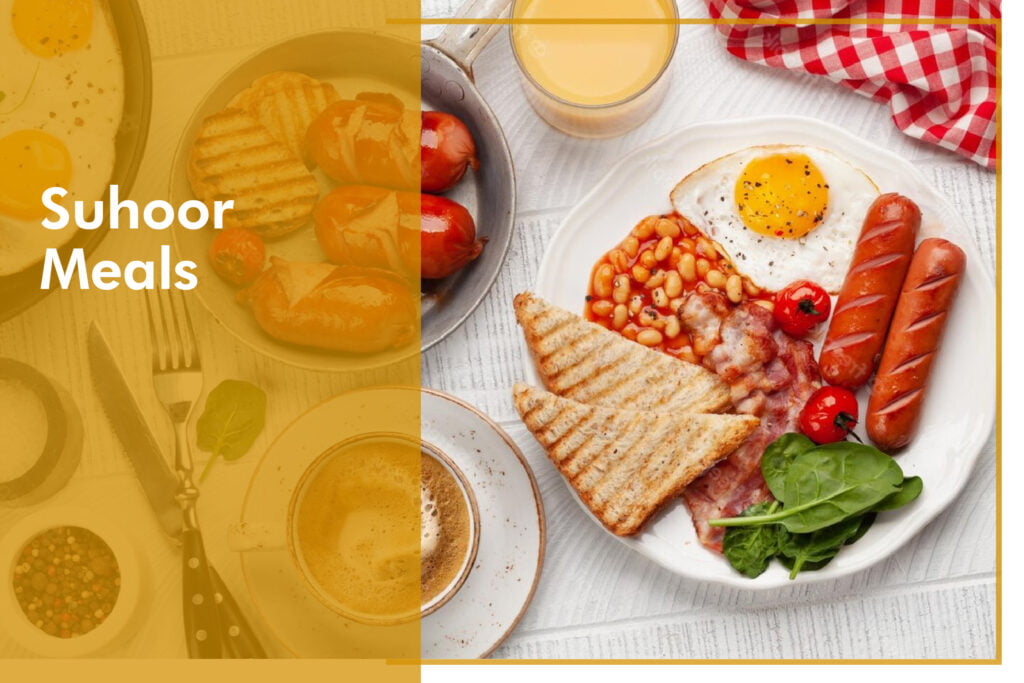
Here are a few things you should keep in mind for healthy ramadan foods:
- Drink fluids to stay well-hydrated for the day.
- Eat starchy foods for energy, high fiber, or wholegrain varieties to keep complete and prevent constipation. Starchy foods like rice or couscous –rice pudding with fruit or couscous with dairy or fruit. Here are a few ideas for your suhoor.
Oats:
Choose porridge with fresh or dried fruit, nuts, or seeds as toppings to maximize the healthy ramadan benefits.
High-fiber breakfast cereals
Remember, savory dishes at Suhoor can cause thirst during the fast. Therefore, avoid salt wherever possible.
Yogurt
Yogurt can be used to avoid the thirst. A sweet butter milk drink is ideal for suhoor.
Bread:
One should go for wholegrain options, e.g., wholemeal toast or chapattis
How to improve kids’ health while fasting?
Here are a few general tips that can optimize kids’ health during fasting.
- Instead of a big dinner at iftaar, focus on getting small frequent meals. Don’t push your child to eat everything soon. They open fast. Instead, regular eating will help enhance their caloric intake.
- Iftaar – child eats something, then performs prayers before returning to eat.
- Hydration is essential, but avoid juices and pop, as this is a concentrated amount of sugar. In fact, fill up a water bottle and encourage your child to sip throughout the evening. Even at Suhoor, a glass of water before they eat and again after they eat.
- Supplements between 600- 1000 IU of vitamin D3 daily for children.
Here are a few healthy snacks and meals ideas for kids:
Whole grain waffles & Pancakes: Replace white flour with whole grain, almond, or oat flour and add nuts or chia seeds.
Recipe for Yogurt & homemade granola
To make a homemade granola recipe, you will need the following:
Rolled oats mixed with Nuts (slivered almonds or sunflower seeds) or Chia seeds(extra omega-3s) mixed with melted coconut/olive oil and honey Or maple syrup. Add ground cinnamon, acceptable sea salt, and vanilla extract to flavor the granola.
- Smoothies: fruit and milk
- Soups and pasta: Great way to add vegetables, protein, and water. Adding lentils and legumes – protein and fiber.
- Burgers boost the nutrition in hamburgers by adding oats to ground beef or chicken to reduce calories and fat
Here are some more ideas: https://remediesforum.com/2021/06/03/lets-go-keto-with-mango-smoothie/
How does a healthy Ramadan meal plan or platter look like?
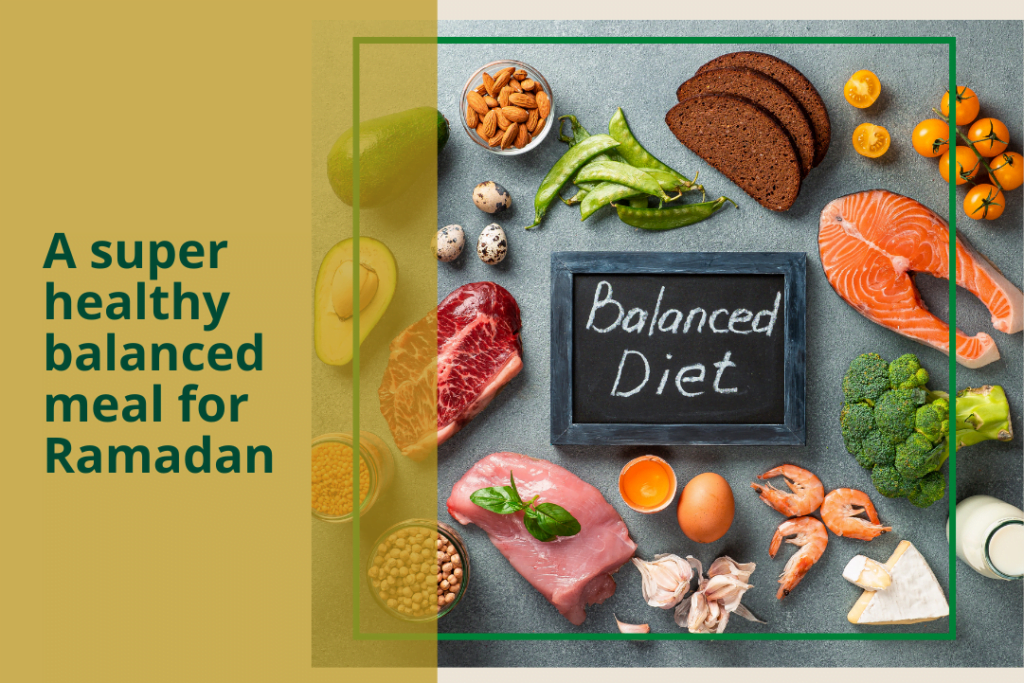
- SEHRI:
- 2-3 glasses of water, 1 fruit or nut; almonds, walnuts
- Main meal: roti/ bread with eggs, or veggie or oatmeal and yogurt
- couscous
- Iftar:
- fresh fruit/ yogurt/ smoothie/soup
- Post Maghreb:
- Roti/ bread with
- chicken, fish, meat, lentils/ rice
- Drink milk, water, nuts, and chia seeds between Iftar and sehri
Conclusion:
We should focus on our physical health during Ramadan as it reflects on our mental well-being too. Let’s bring a positive, healthy change to your family this Ramadan.
Stay tuned for my next article. I will discuss more tips related to fasting in people with chronic diseases, especially hypertension, and diabetes.
Reference:
World Health Organization. (2019). Healthy diet (No. WHO-EM/NUT/282/E). World Health Organization. Regional Office for the Eastern Mediterranean.
Benaji, B., Mounib, N., Roky, R., Aadil, N., Houti, I. E., Moussamih, S., … & El Ghomari, H. (2006). Diabetes and Ramadan: review of the literature. Diabetes research and clinical practice, 73(2), 117-125.
https://www.who.int/news-room/fact-sheets/detail/healthy-diet
https://www.mayoclinic.org/healthy-lifestyle/nutrition-and-healthy-eating
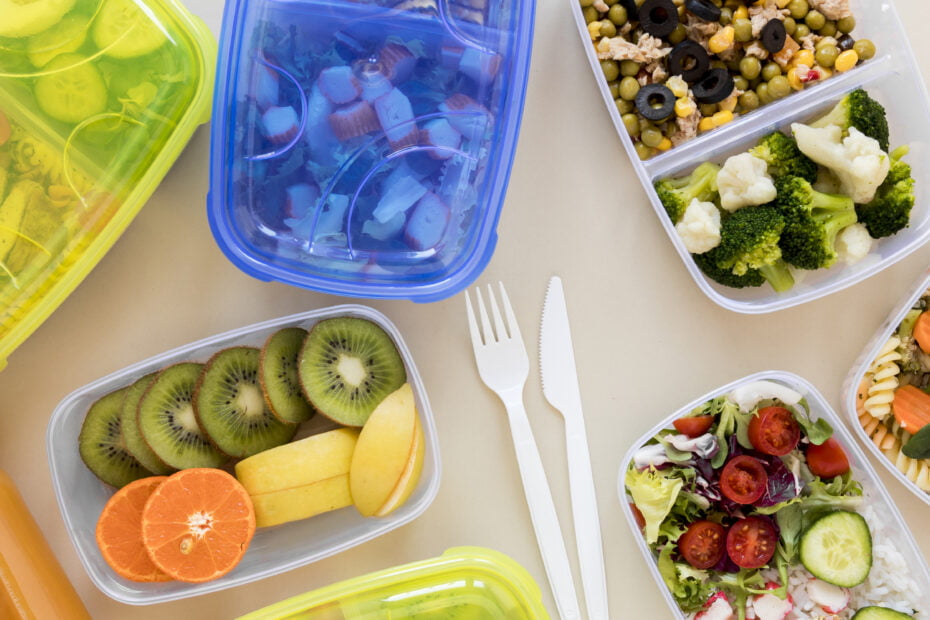
Very well presented. Every quote was awesome and thanks for sharing the content. Keep sharing and keep motivating others.